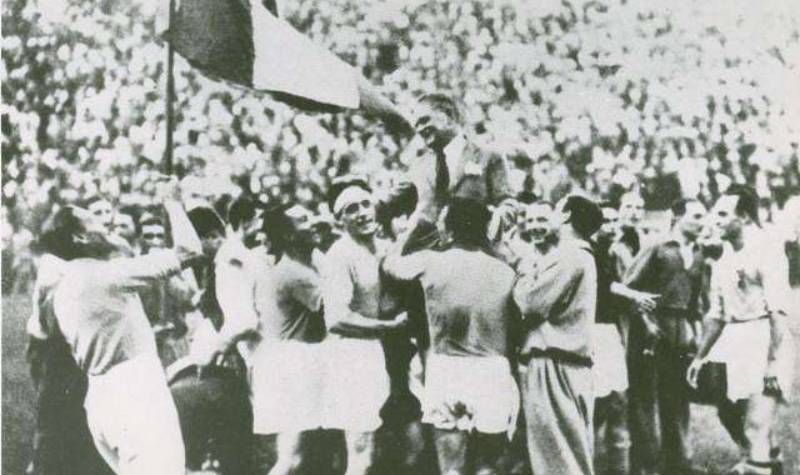Football
MS 1934 in Italy: A distinctive Czechoslovak footprint, a tool of fascism, the Italians thanks to the judges champions
A World Championship with a very strong Czechoslovak footprint – this is undoubtedly how one could interpret the second World Championship in history. However, the whole tournament was also influenced by the political side, namely the propaganda of Benito Mussolini.

A World Championship with a very strong Czechoslovak footprint – this is undoubtedly how the second World Championship in history could be interpreted. However, the whole tournament was also influenced by the political side, namely the propaganda of Benito Mussolini. On the sporting side, this tournament, like the 1930 World Cup in Uruguay, offered unprecedented things, or rather things that have never been repeated in history across all championships.
A total of 16 teams took part in the second ever World Cup, with a large number of European teams taking part in this championship compared to the previous 1930 World Cup in Uruguay.
In particular, the European participants
Namely Belgium, Austria, Sweden, Italy, Switzerland, the Netherlands, France, Spain, Germany, Hungary, Romania and last but not least Czechoslovakia. The only non-European representatives were three countries from the American continent, namely the USA, Brazil and Argentina. And of course Egypt, as the only country representing Africa.
Interestingly, the 1934 World Cup in Italy was not attended by Uruguay. The latter, as the winner of the previous championship, refused to participate in protest against the refusal of some European countries to participate. This was the only championship in history in which the previous winner did not participate.
This was, in fact, one of the topics we focused on in our next special on the World Cup.
In any case, the 1934 World Cup in Italy was hosted by eight cities or eight stadiums – Bologna, Florence, Genoa, Milan, Turin, Naples, Rome and Trieste. It should be noted that this championship had a very strange aftertaste from the very beginning.
Strong political influence
Italy practically paid for its hosting, as the government of that country spent 3.5 million lire on the tournament. And that is why Italy was preferred to Sweden as host. Although the national team itself had to qualify through a qualifying round.
This particular championship was the first ever to which teams had to qualify. However, if we talk about the political influence on the 1934 World Cup in Italy, it was the Italian dictator Benito Mussolini who used the tournament as a tool for fascism and its propaganda.
However, this is not the first time in the history of football that we have seen this. Two years earlier, Adolf Hitler had similarly abused the Olympic Games. It should be added that Italy did not only dominate this championship in the political field, but also on the football pitch itself.
According to information from books and archives, some of the matches in this tournament were bribed, namely by the dictator Mussolini. Josef Bican also spoke about this. It was he who, until his death, claimed that the Swedish referee who refereed the matches between Italy and Austria and Czechoslovakia had been bribed to act in favour of the home team.
Records of the pro-Italian final can also be found in the historical annals – Italy defeated the Czechoslovak team 2-1 in the final of the tournament and took the gold. The first battle for bronze in the history of the World Cup was won by Germany over Austria 3:2.
A great tournament for Czechoslovakia
Nevertheless, it was still a successful championship for Czechoslovakia, Oldřich Nejedlý even became the top scorer with five goals. Although his goal against Germany was only recognised after 72 years. Nejedlý was also the only player who managed to score a hat-trick.
From the selection of that time we must also mention František Plánička, a great footballer and a strong supporter of Czechoslovakia.
Giuseppe Meazza was the star of the 1934 World Cup in Italy, with 17 matches played and 70 goals scored (an average of 4.12 goals per match). It should be added that, given the number of participants, this tournament had no group stage.
However, despite the strong political aspects, this World Cup offered great football with many interesting and bizarre situations. And as we mentioned, a closer look at the 1934 World Cup in Italy can be found in the special attached above.
1. episode: The 1930 World Cup in Uruguay
3. episode: WSC 1938 in France
4. episode:: World Cup 1950 in Brazil
5. episode:: 1954 World Cup in Switzerland
6. episode:: WSC 1958 in Sweden
7. episode:: WSC 1962 in Chile
8. episode:: World Cup 1966 in England
9. episode:: 1970 World Cup in Mexico
10. episode:: MS 1974 in Germany
Sources: FIFA, ESPN












